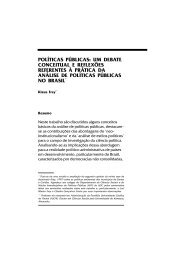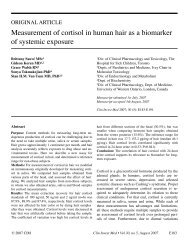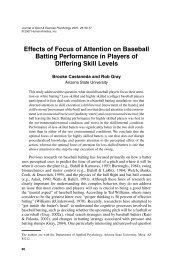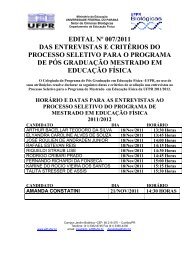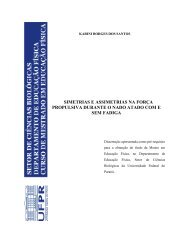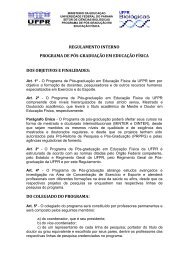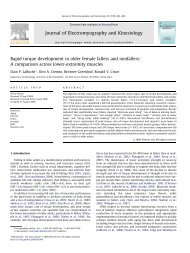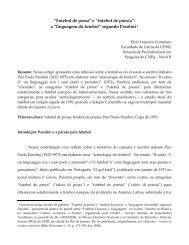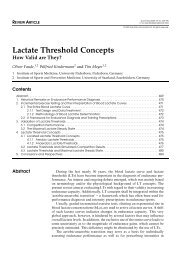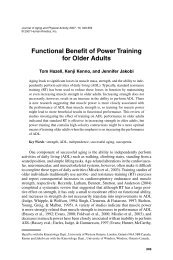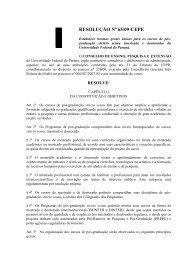BANI SZEREMETA - UFPR - Universidade Federal do Paraná
BANI SZEREMETA - UFPR - Universidade Federal do Paraná
BANI SZEREMETA - UFPR - Universidade Federal do Paraná
You also want an ePaper? Increase the reach of your titles
YUMPU automatically turns print PDFs into web optimized ePapers that Google loves.
14<br />
distributed in 10 groups: birds, vehicle traffic, people, other sounds of nature, machines,<br />
music, air traffic, warning signals, trains, and others.<br />
The sounds of birds, vehicle traffic, other natural sounds and people were identified<br />
regularly in the area of the 4 parks, making up a total of 89.9% of the sample and confirming<br />
that these are the principal sounds that make up the soundscape of these areas. Thus, 32.6% of<br />
the references involved birdsong, 28.5% vehicle traffic, 15.8% other natural sounds, and 13%<br />
referred to human sounds (Table 4).<br />
Please insert here Table 4<br />
An individual analysis of each park revealed that the sound most frequently identified<br />
in the Passeio Público, São Lourenço and Barigüi parks was birdsong, which was mentioned<br />
by 39.4%, 36% and 26.5% of the interviewees, respectively. This was followed, in the same<br />
park, by vehicle traffic sounds, which were mentioned by 26%, 30% and 23.8% of the<br />
interviewees.<br />
In contrast, in the Jardim Botânico, the sound most frequently mentioned was noise<br />
from surrounding vehicle traffic (34.4%). However, birdsong was mentioned less frequently<br />
(31.6%). In this park in particular, train sounds were also mentioned 12 times (5.6% of the<br />
interviewees), since a railroad passes right alongside the park.<br />
Although the Passeio Público is located <strong>do</strong>wntown, where it is easy to see the negative<br />
impact of intense vehicle traffic on its soundscape, this park is the one with the highest<br />
percentage of identified natural sounds. Together, the “bird sounds” and “other natural<br />
sounds” corresponded to 59.4% of the sounds perceived in this area. The reason for these<br />
answers may be the fact that this space is covered in abundant vegetation, in addition to the<br />
presence of various species of bird and monkeys in cages, which sing and scream loudly.



